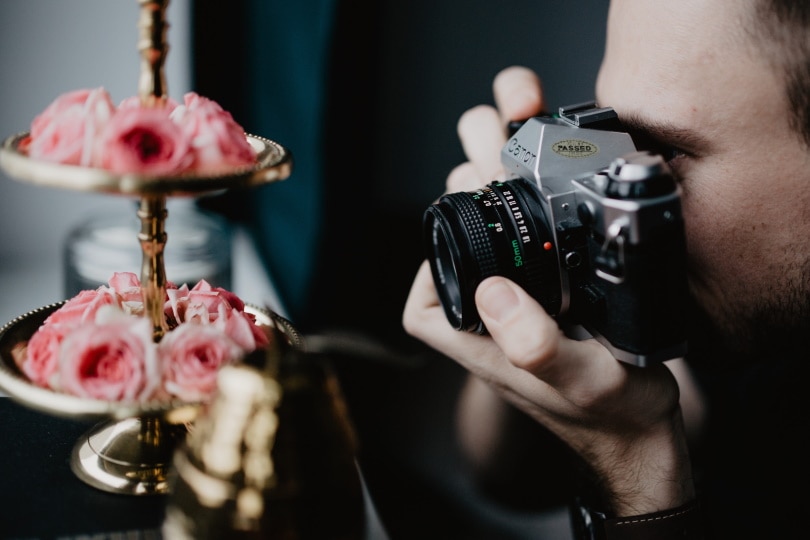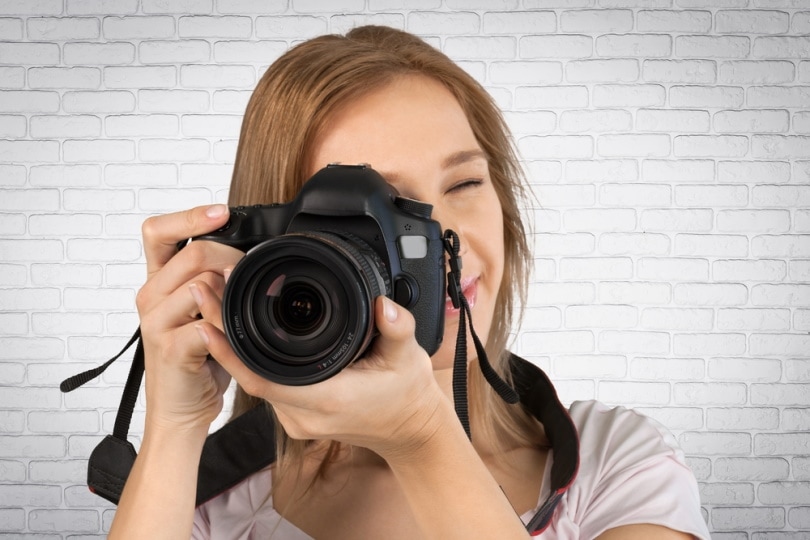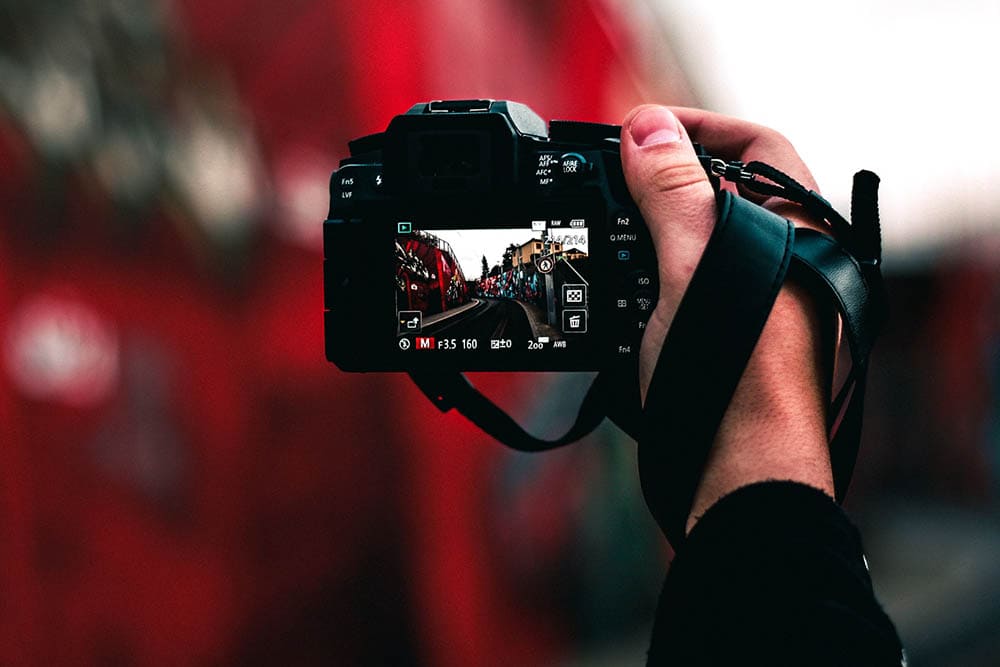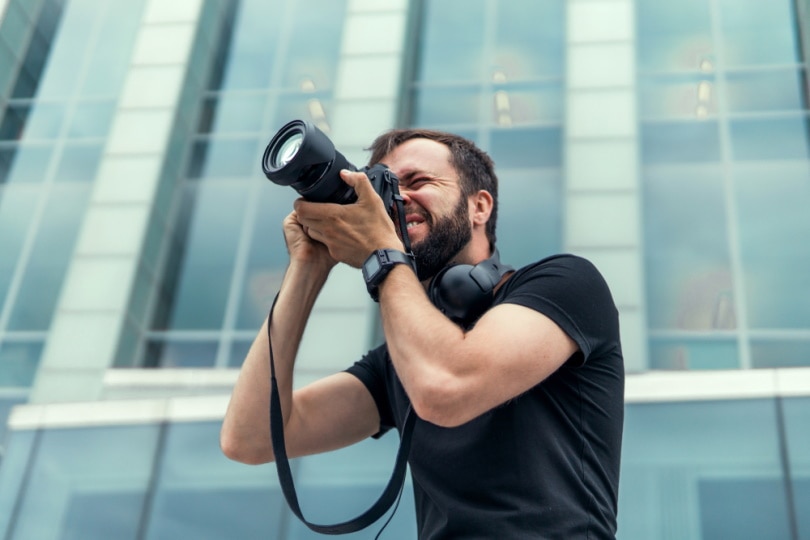Close-Up Photography vs. Macro vs. Micro Lens – How Do They Differ?
Last Updated on

With so many different types of photography out there, it can be a challenge trying to define exactly what you’re looking to do. If you want to make small things look big in your pictures, there are three terms that people often throw around: close-up, macro, and micro photography.
But while many people use these terms interchangeably, they don’t mean the same thing. That is why we created this guide: to break down what each concept is, their differences, and when you want to use each option. We also give you a few basic pointers about the equipment that you need to get started in each field.

Overview of Close-Up Photography
Close-up photography fits many different categories because there’s no specific definition for it.
Close-up photography is essentially any photography that puts the subject close to the viewer. It can be something as subtle as a headshot or something drastic, like a picture of the moon. Close-up photography covers a wide field, including macro photography.
Different Ways to Achieve Close-Up Photography

The most common way to achieve close-up photography is to use a zoom to take pictures of objects or people. However, that’s not the only method. You can also physically get extremely close to an object. Just know that if you get too close, the camera can’t focus and your image will end up blurry.
Advantages and Disadvantages of Close-Up Photography

Since there’s no set definition of “close-up” photography, it can be challenging to list the advantages and disadvantages of this type of photography.
But that in and of itself is a disadvantage. If you’re trying to get into close-up photography and want advice, there are so many different styles out there, it can be a challenge to figure out how to do it.
Of course, that acts as a perk too, since you can take it in whatever direction you want and get creative with it.
- Easy to get into
- Many ways to get the job done
- You can be versatile
- Hard to know what you’re getting
- Wide range of results

Overview of Macro vs. Micro Lens
While macro means big in many other fields, when it comes to photography, it means the image itself is big, which means you’re taking close-ups.
For something to fall under the macro photography tag, the image has to be at least the same size or larger than the real object.
It’s a strict definition, but it makes it a clearly definable field. You can find macro-specific lenses, though you don’t necessarily need a macro lens to take macro images.
Micro photography takes things further. For something to qualify as micro photography, the image needs to be at least 20 times larger than the actual object.
Currently, no camera lens exists that can take micro photography all on its own. So, how do you do it? You’ll need to invest in a microscope and all the attachments necessary to take photos through that eyepiece.
Micro photography is all about capturing images of the microscopic world, and while it can create cool images, it’s definitely a niche photography career field.
What Do You Need for Macro Photography?

If you’re looking to get into macro photography, you’ll need a DSLR or a mirrorless camera. From there, you’ll need to purchase a lens that enables you to take extreme close-up images.
Often, the lens will say “macro” right on it, and other times, it’s simply a lens with enough power to get you an extreme close-up, even if that’s not how it’s marketed. That’s mostly all you need to get into macro photography, although there are plenty of accessories that can help improve the quality of your images.
What Do You Need for Micro Photography?

What’s interesting about micro photography is that there’s not any specific type of camera that you need. Instead, you’ll need to find an adapter that connects your existing camera to a microscope.
A DSLR or a mirrorless camera will give you better results than a smartphone, but as long as you can find an adapter, you can use either one.
- Gives you extreme close-up images
- Defined category
- Creates unique images
- Niche field

What Type of Camera Do You Need for Close-Up, Macro, or Micro Photography?
No matter what type of photography you plan to get into, you need to have the right equipment, and it all starts with the camera. For close-up photography, you can use just about any type of camera that you want, though DSLR and mirrorless cameras will give you the best results.
You can use any type of camera because even something as simple as a headshot qualifies for close-up photography, and you can do this with your smartphone camera.
For macro photography, you need a DSLR or a mirrorless camera. You will need a more powerful lens, and with those cameras, you can put on whatever lens you want.
For micro photography, it’s all about matching the adapter for the camera. As long as you can find an adapter that lets you connect it to a microscope, you can use it for micro photography.

Full-Frame vs. Crop-Sensor Cameras for Close-Up, Macro, and Micro Photography
It’s important to note that when it comes to the sensor on your camera, you will still get all the same advantages that you would if you were taking regular photographs.
That means a full-frame camera will give you a wide field of view for your images and capture more data than a crop-sensor camera. Either option will work, but if you can afford the more expensive full-frame option, it’s going to give you better results.
| Close-Up Photography | Macro Photography | Micro Photography |
| No set definition | Larger than the original object | At least 20x the original object |
| More versatile option | Specific | Extremely niche |
| Easier to get into | Slightly challenging to get into | Challenging to get into |
| Typically doesn’t require special equipment | Typically requires a specific lens | Requires a microscope and a camera adapter |

Summing Up
Now that you know about the different types of photography that you can use when trying to make small things look big, it’s up to you to get what you need to do the job.
No matter what type of photography you’re interested in, get out there and start taking pictures. The best way to learn and improve is to practice!
Featured Image Credit: Piqsels
About the Author Robert Sparks
Robert’s obsession with all things optical started early in life, when his optician father would bring home prototypes for Robert to play with. Nowadays, Robert is dedicated to helping others find the right optics for their needs. His hobbies include astronomy, astrophysics, and model building. Originally from Newark, NJ, he resides in Santa Fe, New Mexico, where the nighttime skies are filled with glittering stars.
Related Articles:
How to Clean a Refractor Telescope: Step-by-Step Guide
How to Clean a Telescope Eyepiece: Step-by-Step Guide
How to Clean a Rifle Scope: 8 Expert Tips
Monocular vs Telescope: Differences Explained (With Pictures)
What Is a Monocular Used For? 8 Common Functions
How to Clean a Telescope Mirror: 8 Expert Tips
Brightfield vs Phase Contrast Microscopy: The Differences Explained
SkyCamHD Drone Review: Pros, Cons, FAQ, & Verdict
